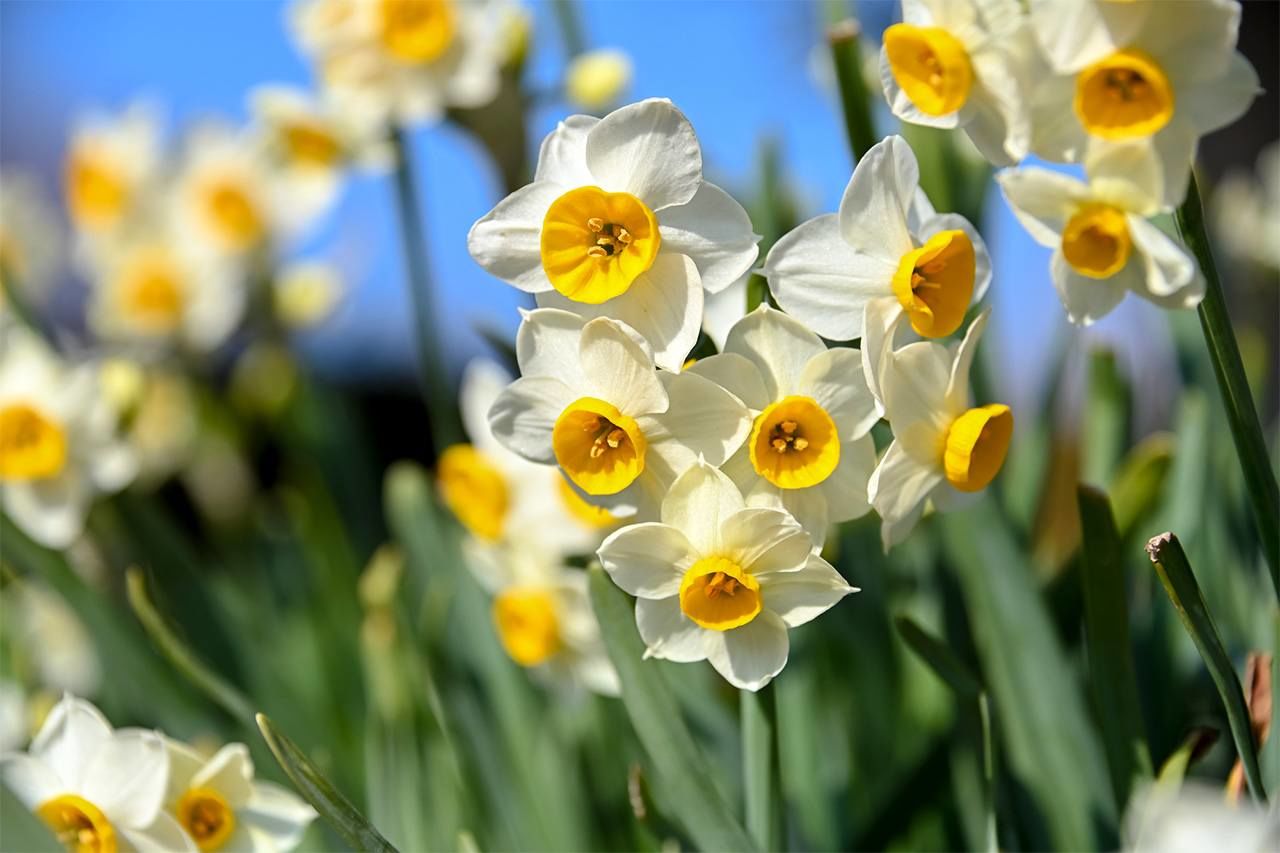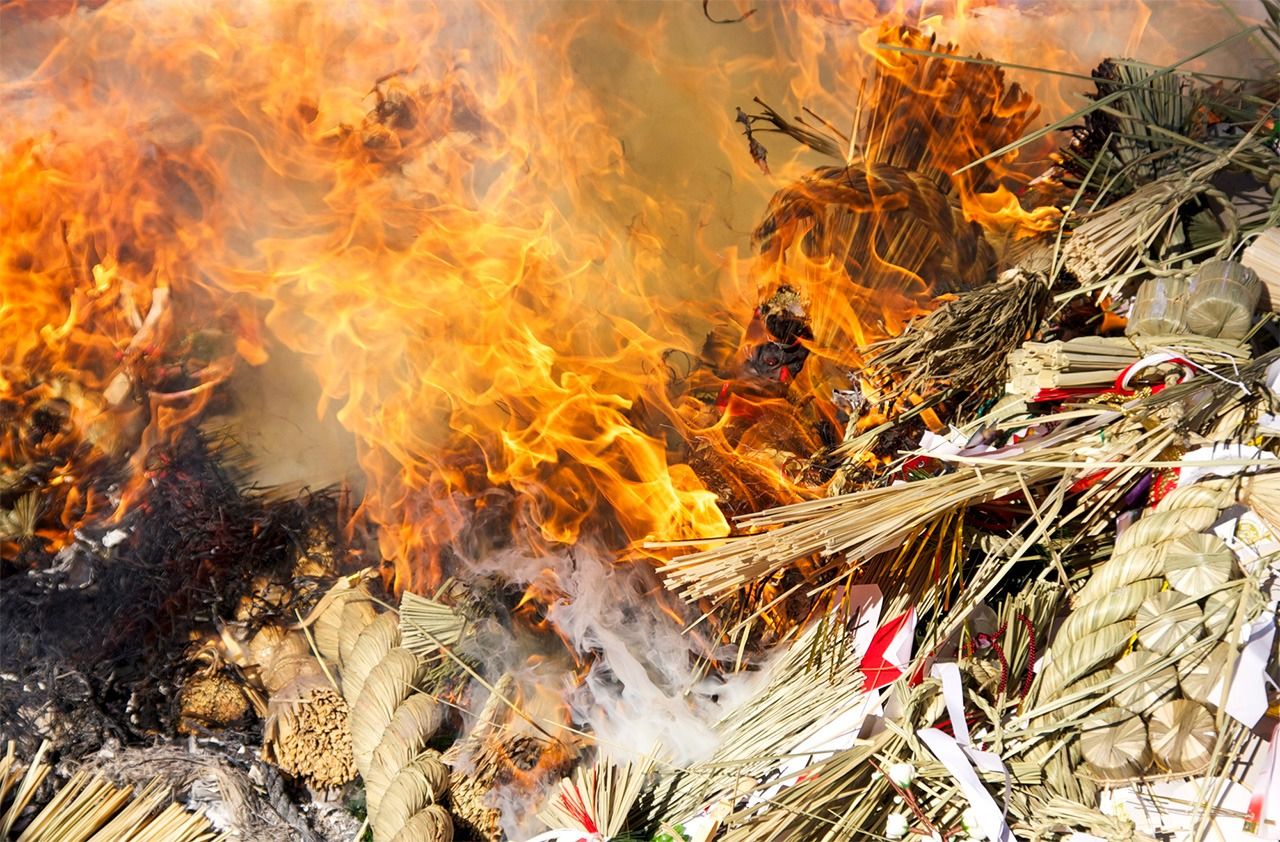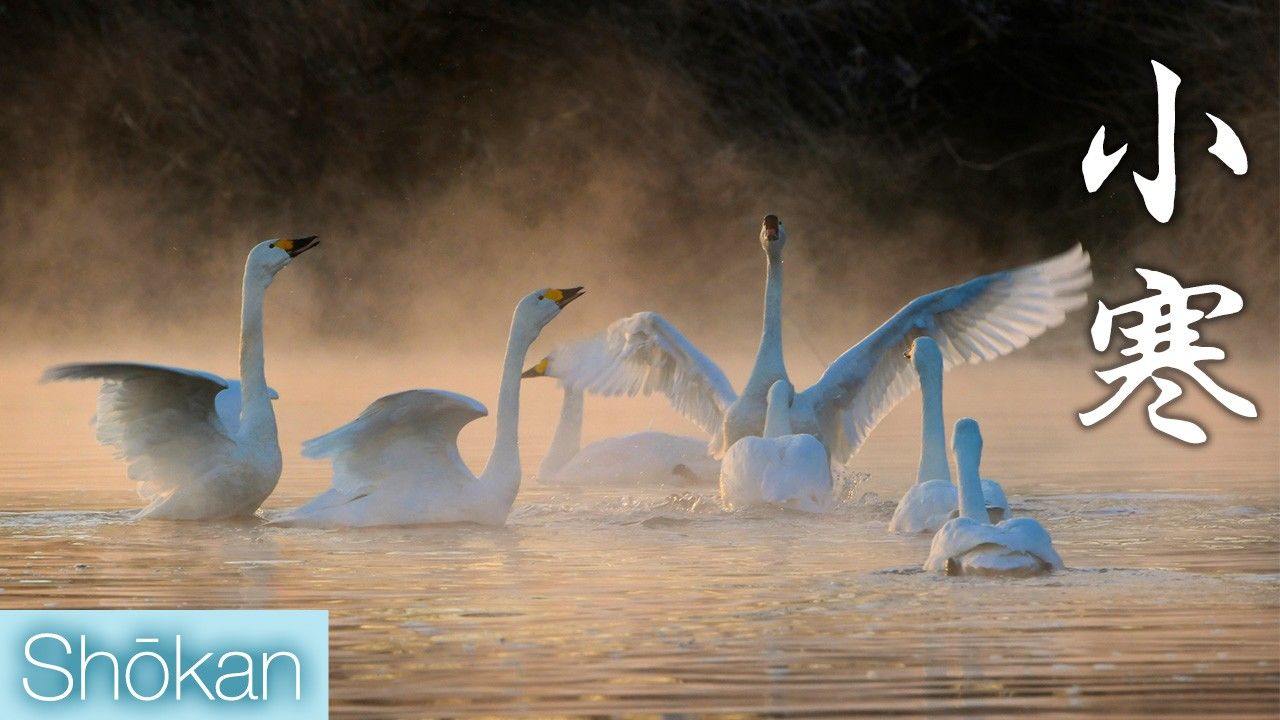
Shōkan (Lesser Cold)
Culture Lifestyle Environment History- English
- 日本語
- 简体字
- 繁體字
- Français
- Español
- العربية
- Русский
The solar term Shōkan (Lesser Cold) begins on approximately January 6 in the modern calendar. The month from Shōkan through to the official Risshun (Beginning of Spring) is called kan-no-uchi or “within the cold.” Some people partake in outdoor swimming or similar fortifying activities. Preparation of fermented foods such as sake, miso, and soy sauce also begin around this time.
This article will look at events and natural phenomena in the period roughly from January 6 to 19.
Daffodils
Daffodils are known for their hardiness, which enables them to flower even in snowy conditions. They are also called kinsenka, literally meaning “golden sake cup flower,” in reference to the golden corona in the center of the flower. Daffodils originated in northern Africa and Spain and were possibly introduced to Japan via the ancient Silk Road. Another theory is that the bulbs were washed ashore, because, in Japan, they grow wild close to the coast. Daffodils were first noted in the Muromachi period (1333–1568) and were considered a dignified flower during the Azuchi-Momoyama period (1568–1603). They have a long flowering season, and some bloom as late as April.
Nanakusa-gayu (Seven herbs porridge) (January 7)
Jinjitsu, literally “Human Day,” is one of Japan’s five key seasonal festivals and is celebrated on January 7. At this time, it is customary to eat nanakusa-gayu, rice porridge cooked with seven herbs, to wish for good health. The seven vernal herbs used in the porridge are seri (water dropwort), nazuna (shepherd’s purse), gogyō (cudweed), hakobera (chickweed), hotokenoza (nipplewort), suzushiro (daikon), and suzuna (turnip). Shops sell packs of the seven herbs in the lead up to Jinjitsu. Seven-herb rice porridge also gives the digestive system a welcome rest after the heavy eating and drinking through the holiday season.

The seven herbs (from left): hakobera (chickweed), nazuna (shepherd’s purse), hotokenoza (nipplewort), seri (water dropwort), gogyō (cudweed), suzushiro (daikon), and suzuna (turnip), (left); a bowl of nanakusa-gayu. (© Pixta)
Kagami-Biraki (January 11)
Kagami mochi, literally “mirror rice cakes,” are a component in traditional Japanese New Year decorations offered to the New Year gods. On January 11, the now hard mochi are broken into pieces, often with a wooden mallet, to be cooked and eaten to pray for good health and to avert misfortune. Because the gods “dwell” in the mochi, it is considered taboo to cut them with a blade. Instead, the process of breaking up the rice cakes is referred to as “biraki” meaning “to open,” which has lucky connotations. The pieces can be used to make rice crackers, or added to zōni, a vegetable and mochi soup, or shiruko, a sweet soup made with azuki beans. Kagami mochi is believed to impart vitality when eaten.

mallet (left), shiruko (sweet azuki bean soup) with mochi. (© Pixta)
Tōka Ebisu (January 9–11)
Ebisu, one of the shichifukujin (seven gods of fortune), is believed to bring good luck to commercial fishing and other businesses. From January 9, temples and shrines dedicated to Ebisu hold a popular three-day festival. Many worshipers buy decorated fukuzasa (lucky bamboo branches) or ornamental rakes known as kumade (literally “bear paws”) to mount at their place of business.
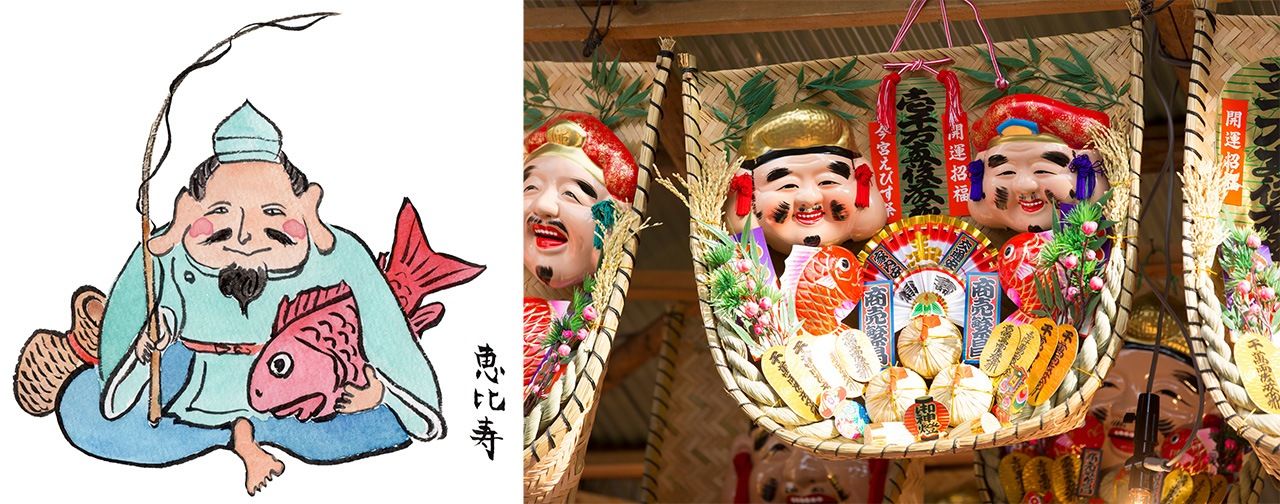
The god of fishing and business, Ebisu, depicted holding a fishing rod and a sea bream (left); Tōka Ebisu festive ornaments. (© Pixta)
The three most famous Ebisu shrines are Nishinomiya Shrine in Hyōgo Prefecture, Imamiya Ebisu Shrine in Osaka, and Kyoto Ebisu Shrine. Nishinomiya Shrine stages a rite to choose the lucky man of the year when the shrine gates open at six in the morning on January 10. Worshippers race along the 230-meter approach to the main shrine building, and the first three runners are designated the “lucky men” for the year.
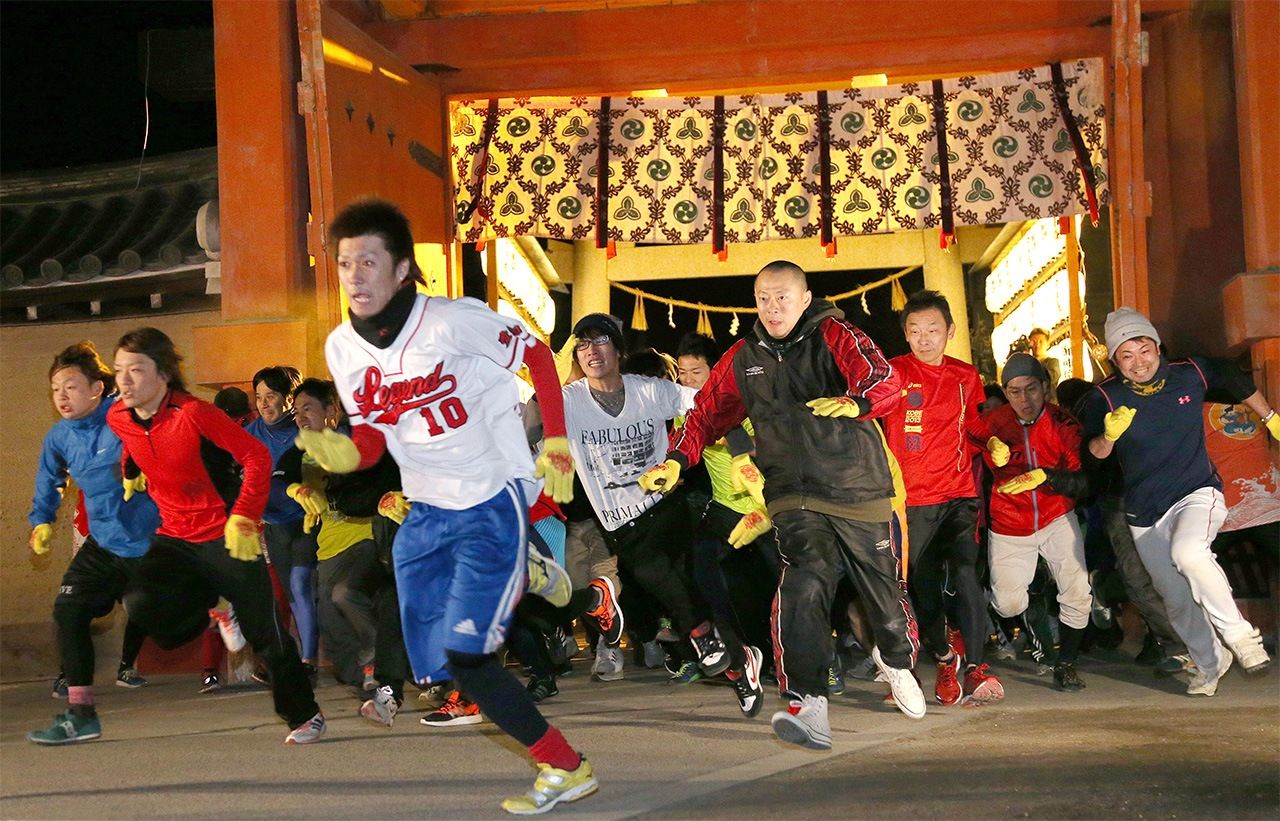
Around 6,000 runners take part to be the “lucky man” of the year in the annual race at Nishinomiya Shrine, in Hyōgo Prefecture, on January 10, 2016. (© Jiji)
Tondoyaki/Dontoyaki (between January 7 and 15)
In January, temples and shrines hold a ritual burning of shimenawa (sacred rope) and other New Year’s decorations from people’s homes. Some people also bring their kakizome, the first calligraphy of the year, to burn. The date and even name of this custom varies from region to region. Burning these items “sends” the gods back to heaven and is believed to bring good health for the year.
Turnips
The turnip is one of the seven vernal herbs. It is known as kabu today in Japan, but in ancient times, it was called suzuna, meaning “bell vegetable,” after its shape. Turnips are mentioned in the ancient chronicle Nihon shoki, and different strains exist throughout Japan. The giant Shōgoin kabu, measuring up to 20 centimeters in diameter, is the variety used to make the famous senmaizuke sliced pickles of Kyoto. The colder the growing conditions, the sweeter they taste. They can be easily boiled, making them an ideal ingredient for a range of nabe hot pot dishes and stews, or in warm salads.
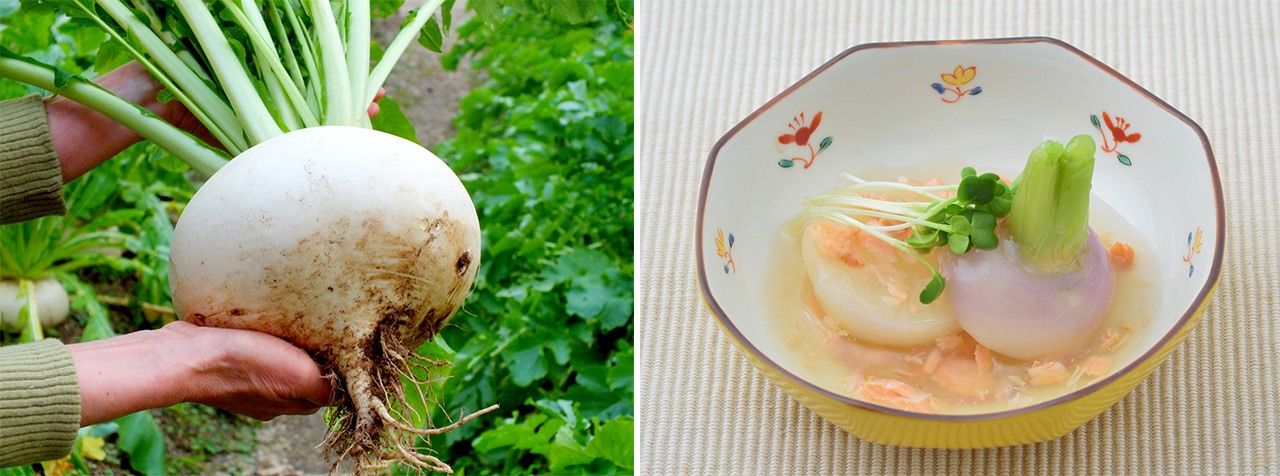
Shōgoin kabu (left); kabura-mushi (boiled turnip). (© Pixta)
Shungiku (Garland Chrysanthemums)
Shungiku (literally “spring chrysanthemum”) is a staple ingredient in hot pots. In the Kansai region, it is also known as kikuna. The vegetable adds a distinctive aroma and bitterness to dishes. The leaves contain abundant beta-carotene, said to improve skin condition, and to help prevent colds.
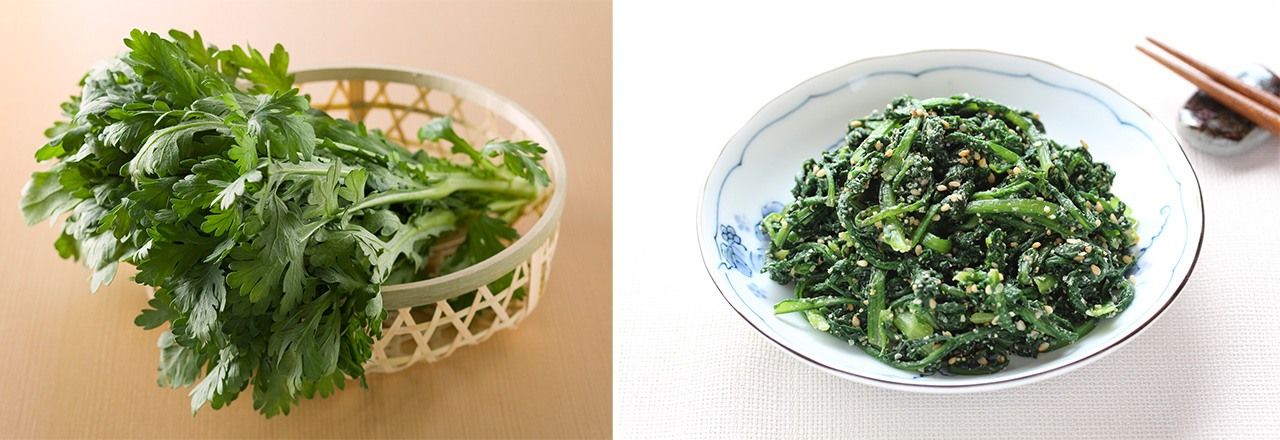
Uncooked shungiku (left); shungiku seasoned with sesame sauce. (© Pixta)
Kumquats
Kumquats are a thin-skinned, bite-size citrus fruit that can be eaten whole. The Japanese name kinkan is a portmanteau of kin meaning golden and kan from mikan (mandarin), and the English name is derived from the Cantonese pronunciation of the same word. Around 70% of Japanese kumquats are harvested in Miyazaki Prefecture. Their skin is rich in vitamin C and they can be preserved whole in sugar, to be consumed to relieve coughs, or candied as kanroni. Fully ripe kumquats are bittersweet and can be consumed whole.
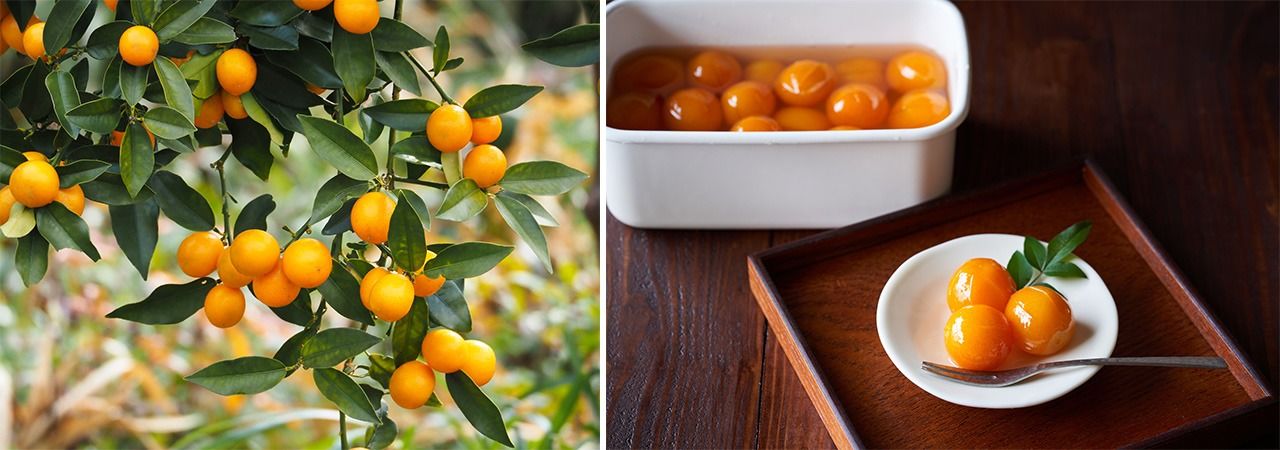
Bunches of kumquats (left); kanroni (candied kumquats). (© Pixta)
Ankō (Goosefish)
Goosefish is a deep-sea fish and, despite its rather ugly appearance, is a popular winter food. It is described as having seven key parts: the fins, skin, gills, liver, stomach, ovaries, and the flesh. It is renowned for having no part that is discarded—even the tail, cheek, and chin meat can be eaten. Goosefish is perfect in hot pots, and the liver adds an intense flavor to dishes.

Goosefish (left); Goosefish hot pot. (© Pixta)
(Translated from Japanese. Supervised by Inoue Shōei, a calendar researcher and author, Shintō priest, and guest lecturer at Tōhoku Fukushi University. Banner photo: Swans landing on a lake. © Pixta.)
